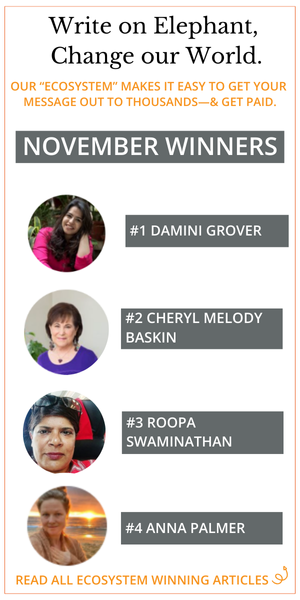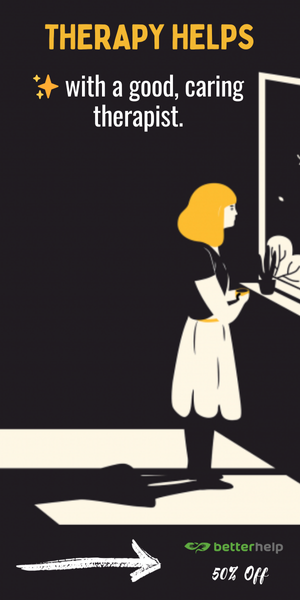
Six years ago, Jenna Hollenstein stopped drinking.
Though she could never quite identify herself as an alcoholic, she realized that alcohol detracted from her life in subtle but important ways. Something told Jenna that meditation might help her to deal with the difficult thoughts and feelings that used to drive her to drink.
The following is an excerpt from her new book, Drinking to Distraction, in which she tries meditation for the first time.
“Amore Senza Vino”
Having dipped my toe into the discomfort pool with running, I decided to do something really dangerous. I started seeing a man I had dated years earlier, the same Sicilian scientist who missed my book party the night I got wasted and left my laptop computer in a cab.
After we broke up a few years earlier, he moved to New York City to start his own lab. We reconnected via Facebook and met for dinner one night when I was in town helping Lila look for an apartment. Sitting across from him at an elegant Japanese restaurant, I felt that old spark.
We reminisced about our first date, when we met in a Boston coffee shop and I suggested he get The Elements of Style to help him write his first big scientific paper (he went to the bookstore that afternoon to buy it). We told one another what had happened in our lives since we had last talked. We discussed our families, our jobs, and how much had changed. I told him I had quit drinking, and he was impressed.
He still made goofy jokes that would only be funny to a native Italian speaker who now spoke mostly in English; the jokes themselves were terrible but his utter delight with them made me laugh despite my best efforts. After dinner, he showed me the building where he worked, the lab he built.
Humble to a fault, he came as close to bragging as I had ever seen him. I knew he was not just proud of his accomplishments, but excited to share them with me.
For a few months after that night we stayed in touch but didn’t see one another. I was still cautious about dating and he didn’t push too hard. It wasn’t until he pulled a little April Fool’s Day joke and changed his relationship status on Facebook to “married” that I nearly jumped out of my chair and realized how strongly I still felt for him.
A month later, we were in Washington DC for different professional conferences and thus began our long-distance romance. It comprised long weekends in New York and Boston, phone calls and Skype sessions, and a lot of texting. Soon I was falling in love sober for the first time since high school. But without the buffer of alcohol, I felt unprotected from all of the awkward, insecure, and anxious moments of new-old love.
At times the fear of loving someone who had hurt and disappointed me was overwhelming, and I wasn’t sure if I was capable of the forgiveness and trust that was necessary to move forward.
All at once it seemed I was on the brink of something potentially great and extremely perilous, like walking a high wire without a net. I needed guidance.
Much like I contemplated changing my drinking habits for years before ever taking action, I had long considered meditating.
I read about it extensively, but never actually sat down to do it. Meditation was something I idealized; it was part of the person I wanted to become. And I wondered whether it was the missing link that would help me face my fears, anxiety, and self-doubt—the things I drank to avoid.
I went to my bookshelf and pulled out The Wisdom of a Broken Heart, Susan Piver’s guide to dealing with heartbreak that involves seeing it as potentially transformative. Though I didn’t have a broken heart per se, I identified with her description of heartbreak’s rawness and vulnerability, which I had felt since I quit drinking and especially since I embarked on a new relationship. In that relationship—and in life—I wanted to feel the full range of emotions without either giving up too much of myself or completely shutting down.
Susan’s book also provided meditation instruction. As I was reading one night, with some trepidation, I slid from my bed to the floor, two pillows strategically arranged beneath me. I set a timer for ten minutes and tried to follow those instructions:
Body: sit in a comfortable, uplifted, cross-legged position with a straight, unsupported back, the hands palms down on the thighs, and the eyes open to gaze softly at a spot about six feet away on the floor.
Breath: place awareness on the breath coming in and going out through the nose.
Mind: rather than trying not to think, place awareness on the breath; when thoughts inevitably draw the attention away, label them “thinking” and gently return attention to the breath.
My first meditation session went roughly like this:
Okay, my attention is on the breath. IN, OUT, IN, OUT, IN, OUT. I never noticed how some of the whorls on the chest of drawers in front of me look like a big brown bear peeking out from behind a tree. My boyfriend leaves for Sicily shortly, I wonder if I’ll hear from him. I hate my hips; they’re so tight. I can’t even sit correctly for meditation. Maybe I’ll take the long way to work tomorrow so I can pick up an iced coffee. Wait, I’m supposed to be focusing on the breath. IN, OUT, IN. Can you imagine if I tried to do this at my parents’ house, with the telephone ringing off the hook and people knocking down my door? I should text my boyfriend and say, “have a good trip” or should I say, “have a good flight?” Oh, shit. IN, OUT, IN, OUT. How many minutes do I have left? I’m not sure I can do this every day. Maybe I should set an alarm on my phone to remind me to meditate every day. What am I going to do with the cats so they don’t distract me? IN, OUT. How long do I have to do this before I feel better? I have to pee.
That was the first 30 seconds.
The next day I reached out to Susan directly. We had met years before but had not kept in touch. I told her I had tried to meditate and she graciously offered to introduce me to the practice she described in her book. A few days later, I visited her at her home and she asked me why now felt like the right time to start meditating.
Almost as soon as I opened my mouth, I was sobbing.
I told Susan about my decision to stop drinking, how I had used alcohol to deal with difficult emotions and to fill in the empty spaces of my life. I told her I was falling in love with someone who hurt me years earlier and that it was the first time since I’d stopped drinking that I felt so strongly for someone. I told her how precarious and hopeful I felt.
“It’s not surprising that you feel this way,” she said, “You’ve opened your heart to someone and that’s good. You want to learn how to remain open and have stability.” This was exactly how I felt. I knew I didn’t want to close my heart; that was no way to live and certainly no way to love. I just didn’t want to feel like my heart might explode at any moment.
We moved into to Susan’s office. She lit two oil lamps and we sat on cushions facing her meditation shrine. She explained that the practice she described in her book is called Shamatha, which means peacefully abiding. In a quiet, steady voice, Susan provided meditation instruction on the body, breath, and mind.
She didn’t instruct me to not think or to go to my happy place. She spoke of developing curiosity about the mind, of how the body is both strong and soft, and how attention to the breath is both gentle and precise.
My eyes fell lightly on a spot along the border of the silk cloth lining the shrine and I sent out my breath and drew it back like waves gently rushing the shore and receding. In the ten minutes we practiced together, I didn’t think about whether I should be somewhere else. I didn’t think of work or to-do lists or even my fears about my new love. I’m sure that some thoughts came and went, but my overall experience was one of calm, something I hadn’t felt in some time. I was hooked.
Before I left that day, Susan’s one piece of advice regarding meditation practice was just to relax—not to zone out or will my mind to be blank, but to be however I am, whether that meant sad or anxious or happy or boring.
The next day I sat alone on my bedroom floor, pillows sticking out from every which way to support my tight hips. I programmed my newly downloaded iPhone meditation app for 10 minutes and started to meditate.
Love elephant and want to go steady?
Sign up for our (curated) daily and weekly newsletters!
Editorial Assistant: Brandy Mansfield / Editor: Catherine Monkman
Photo: Jennifer Moore


 Share on bsky
Share on bsky




Read 2 comments and reply